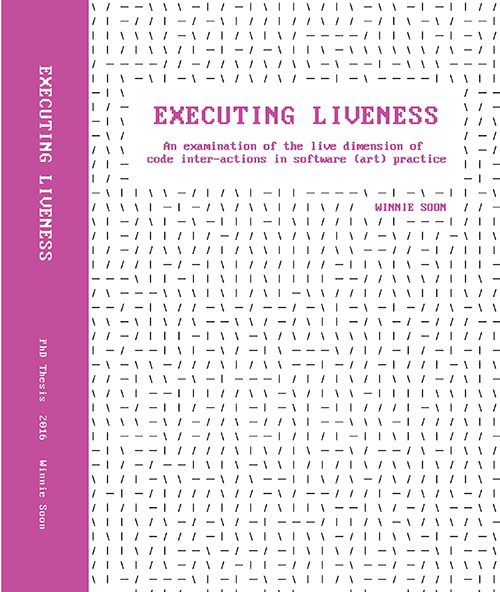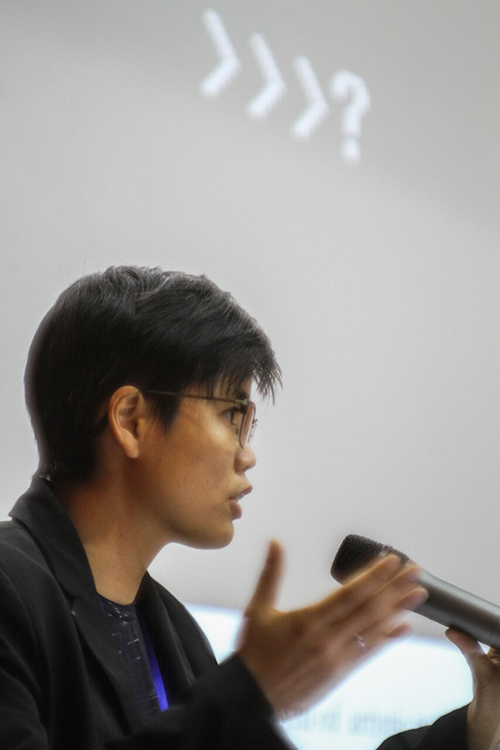PhD Defence: Winnie Soon
Executing Liveness: An examination of the live dimension of code inter-actions in software (art) practice
Oplysninger om arrangementet
Tidspunkt
Sted
The small Auditorium, Building 5510, INCUBA Science Park, Aabogade 15, 8200 Aarhus N


Assessment committee:
- Matthew Fuller, professor, Centre for Cultural Studies, Goldsmiths College, University of London
- Sally-Jane Norman, professor of Performance Technologies (Media and Film, Music), University of Sussex
- Søren Pold, associate professor, Department of Digital Design and Information Studies, School of Communication and Culture, Aarhus University (chair)
Supervisor:
- Geoff Cox, associate professor, Department of Digital Design and Information Studies, School of Communication and Culture, Aarhus University
Co-supervisors:
- Jane Prophet, professor, Goldsmiths College, University of London
- Christian Ulrik Andersen, associate professor, Department of Digital Design and Information Studies, School of Communication and Culture, Aarhus University
The defence is public and everybody is welcome.
The defence proceedings will be in English.
The dissertation is available for reading on location at this address:
School of Communication and Culture, Department of Digital Design and Information Studies, Building 5347, Room 118, Helsingforsgade 14, 8200 Aarhus N
SHORT ABSTRACT:
With today’s prevalence of technology enormous quantities of data are generated and disseminated in real-time through a highly networked, programmable and distributed environment. Networks of machines and the circulation of data mediate our sense of time. The sensation of ‘liveness’ is deeply reconfigured by complex technological infrastructures behind ubiquitous screens and interfaces. This thesis explores how real-time computation reconfigures this immanent sense of liveness, specifically in relation to contemporary software art and culture. By focusing on the live dimension of code inter-actions this thesis examines the complexity of our current computational environment as evident in the increasing use of data queries, the instantaneous transmission of data streams and the seamless running of automated agents.
A materialist framework for liveness is presented with the use of three main vectors, namely: unpredictability, micro-temporality and automation. This facilitates the unfolding of the assemblages of things and relations that have emerged through the inter-actions of code across various computational layers at multiple scales. The analysis and discussion contributes to a widening of critical attention to software (art) studies primarily in terms of its distinct focus on the live dimension of code. Furthermore, it expands the debate in media and performance studies, providing technical description and analysis in relation to the concept of liveness. In overall terms, the research contributes to our understanding of software by expanding our understanding of liveness in contemporary culture. This includes a nuanced examination of liveness beyond immediate human reception.
